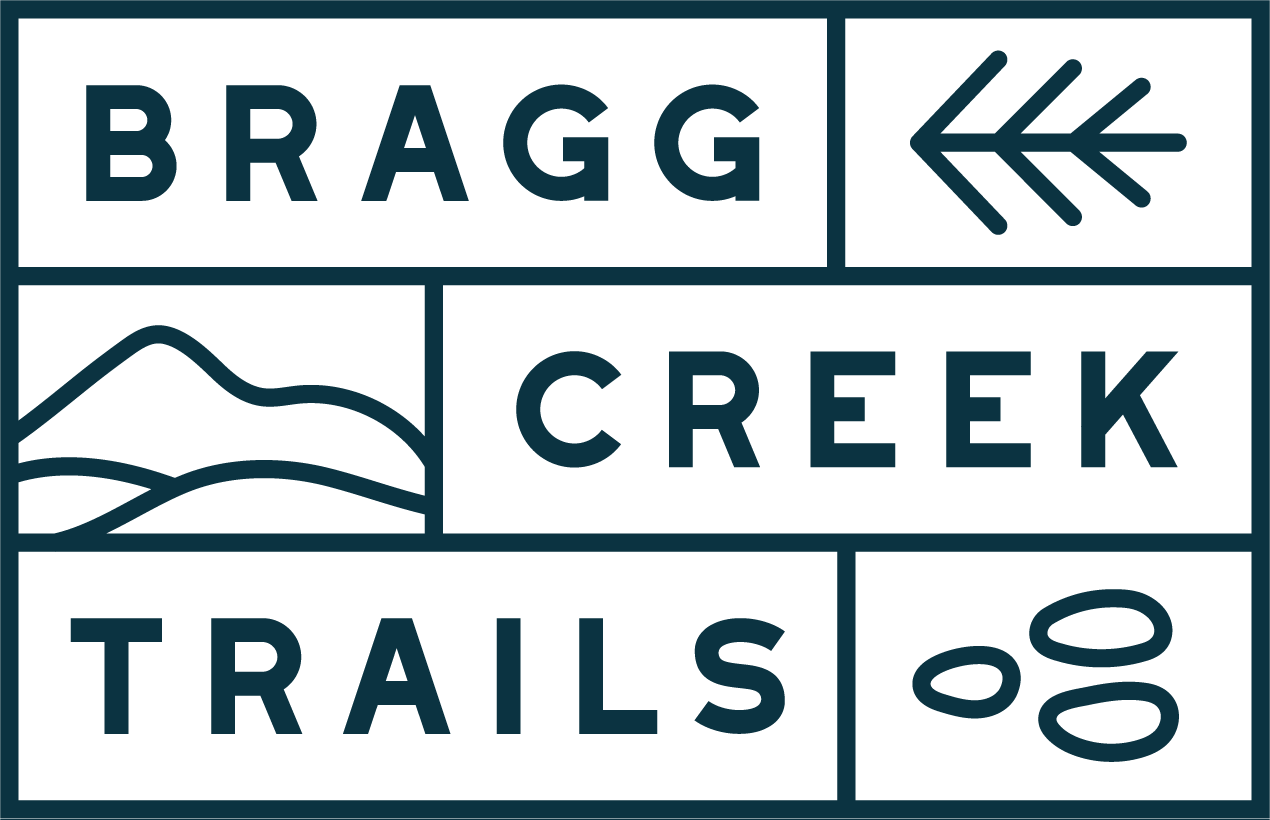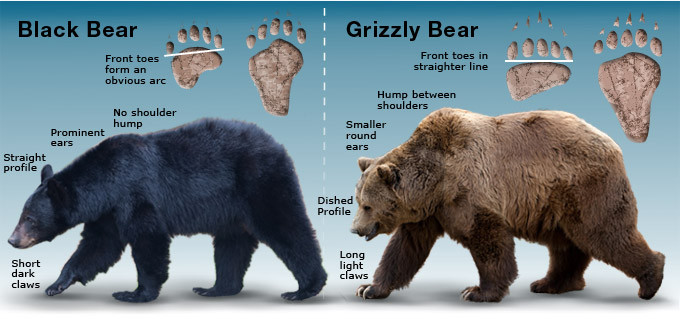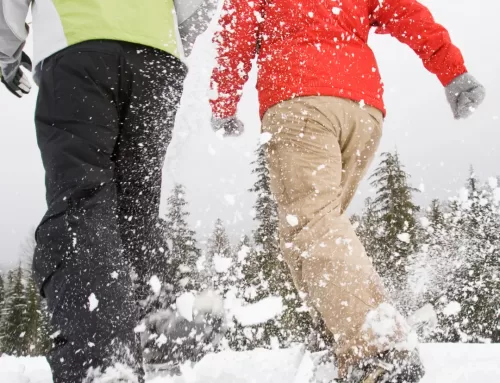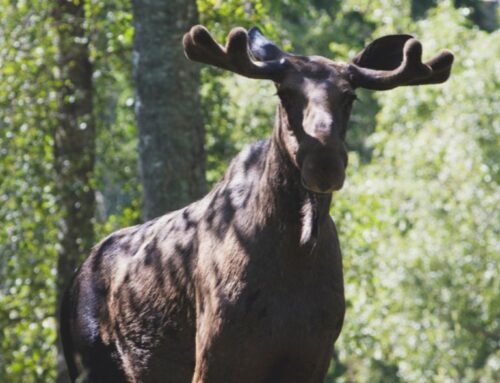Last month I shared some of the differences between White-Tail and Mule Deer. Since Spring has now officially started and our bruin friends will be emerging from their dens very soon, this month I thought I would highlight characteristics between Black Bears and Grizzly Bears.
Alberta is home to two species of bear and both can be found in the West Bragg Creek area. Seeing a bear in the wild can be an exhilarating, if not a fearful, experience. Many times colour is the first characteristic that is noticed, however colour is not an effective way of determining species. As their name suggests, Black Bears are often black in colour, but there are also a variety of colour phases including chocolate brown, blonde, cinnamon, grey-ish blue (often referred to as a glacier bear), and in the case of the Kermode (or Spirit) Bears, pure white. While Grizzlies have a tendency to be more brown in colour, they too can range from blonde (like GB178, more commonly known as Nakoda) to black. Grizzlies are also larger than Black Bears, but unless the two species are standing side-by-side, a rarity in the wild, it’s difficult to determine size without context.
So, if colour and size aren’t good indicators of species, how can we tell them apart? To distinguish between the two we need to look closer at the bear’s body shape and more subtle characteristics, which isn’t always easy to do in the field.
Grizzlies have a prominent hump on their shoulders that Black Bears don’t possess. Grizzlies also have much longer, lighter-coloured claws, whereas Black Bears have shorter, dark-coloured claws. Naturally, the shoulder hump is much easier to spot since you’d have to be uncomfortably close to a bear to really notice its claws. The large hump and long claws are evolutionary traits that allow the Grizzlies to be expert diggers. They can rapidly excavate ground squirrel dens in search of prey. The shorter claws and smaller stature of Black Bears allow them to be adept climbers, a skill their larger cousins lack.
You can also look to the bear’s face for some tell-tale signs. A Black Bear features prominent ears and a straight facial profile. Grizzlies, on the other hand, have small, rounded ears and a dish-shaped facial profile.
Even if you don’t see the bear, you can tell they’ve been in an area by what they leave behind. Tracks, scat, and claw marks are the most common signs, but to the trained eye you could also see overturned rocks, torn apart logs, diggings, clumps of hair (on tree bark or caught on barbed wire fences), or even carcasses. Out of all the signs a bear might leave behind, tracks are the only accurate way of determining species.
The front toes on a Black Bear track form an obvious arcing pattern and the claws will be spaced closer to the toe pads. The tracks from a Grizzly will feature the toes in a straight line with the claw marks much further from the toe pads.
Hopefully this guide will help you determine the differences between Black Bears and Grizzlies so you’ll have a better chance of accurately identifying the species if you see them in the wild.
Please refer to our Bear Aware article before venturing out in bear country. You can also reference how to Be Bear Smart as shared from Alberta Parks and learn to Know Your Bears as provided by the Government of Alberta. Remember, all bear sightings within West Bragg Creek and the greater Kananaskis area should be reported to Kananaskis Country Emergency Services at 403-591-7755.





